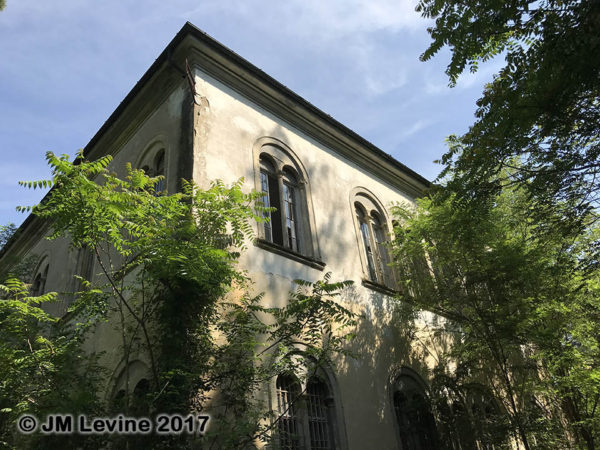
My first view of this imposing structure.
Tuscany is an enchanting place filled with scenic beauty, but beneath the surface there is dark history. On a recent painting trip to Italy I had the opportunity to tour an abandoned psychiatric hospital in the town of Volterra. In the late 19th Century when it was opened, it was a state-of-the-art asylum that promoted fresh air and work therapy. But as the years went on it became overcrowded and developed a reputation as a place of cruelty, and was finally closed in 1978. It now sits on hundreds of acres — abandoned, decaying, and being reclaimed by nature.
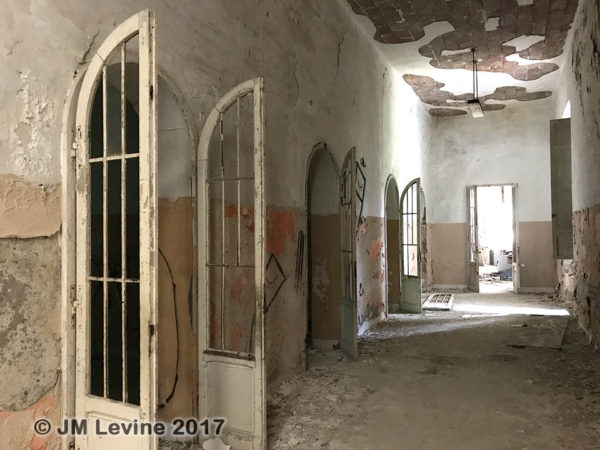
Every door in the facility has metal bars that are now rusting.
There are stories that Mussolini used it to house political prisoners during the Fascist regime. The story of the Ospedale Psichiatrico di Volterra is similar to many psychiatric facilities in America, including Letchworth Village where I visited and photographed in 2013 with medical historian Michael Nevins. Letchworth however, did not have bars on windows and doors.
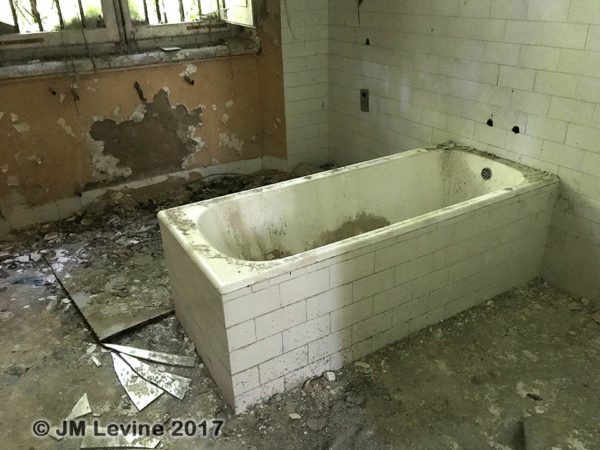
This is one of the tub rooms. Cold water baths were one of the treatments for mental illness.
This post presents some of the best photographs I took there, which convey the eerie silence that bespeaks the suffering of thousands of people whose stories were never told. This place was known as ‘the place of no return’ because people who entered never left. Caches of letters written by inmates were never sent, and you can see rusting bars on every window and door. People sent here included not only the mentally ill, but the unwanted of society including unwed mothers and political prisoners.
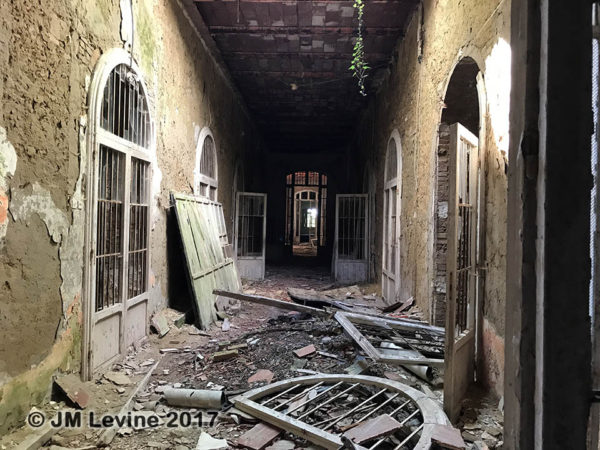
A typical view of a hallway in the crumbling facility.
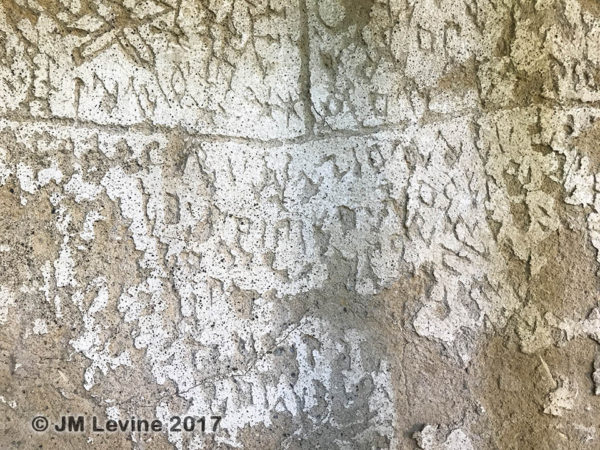
Part of the graffiti scratched into the walls with a belt buckle over many years by an inmate, Oreste Ferdinand Nannetti.
One of the inmates actually achieved posthumous fame as a graffiti artist. His name was Oreste Fernando Nannetti, and referred to himself as NOF4, the first letters of his name and 4, his ID number in the asylum. He spent years carving his life story and religious thoughts into the walls around the courtyard using his belt buckle. Most of his work has succumbed to decay, but there is still some to see and photograph.
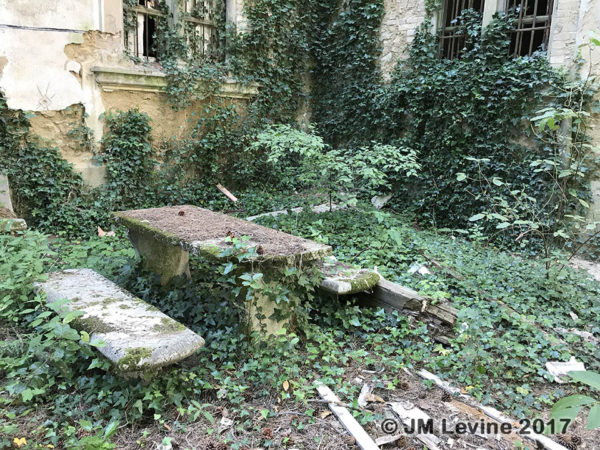
This is the overgrown yard where mental patients got exercise and fresh air. Today the thick trees overhead allow little sunlight into the area.
One of the spookiest things was that although the place was being reclaimed by nature, the greenery seemed to stop at the door. There were few if any plants inside the facility, and although the air was filled with the songs of birds, there were no birds inside although most of the glass window panes were smashed leaving the windows wide open. It was as if nature was fearful of entering the crumbling structure.
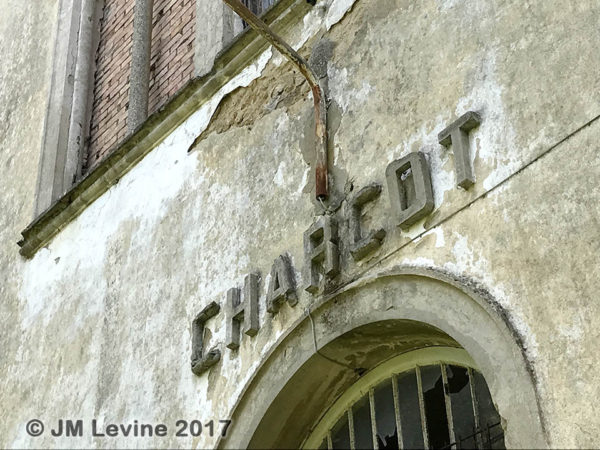
Each building was named for a famous psychiatrist. This one was named for Jean Martin Charcot, who was alive when the facility was founded in 1888.
This wasn’t part of my planned trip, but when I found out about this place I decided I had to go. When I told my host I was visiting there, she became visibly shaken and urged me not to go because of all the bad spirits that lived there and all the suffering that took place. I admit, after talking to her I was a bit spooked and almost cancelled my trip. But I didn’t allow evil spirits to stop me and set out the following day with a private guide.
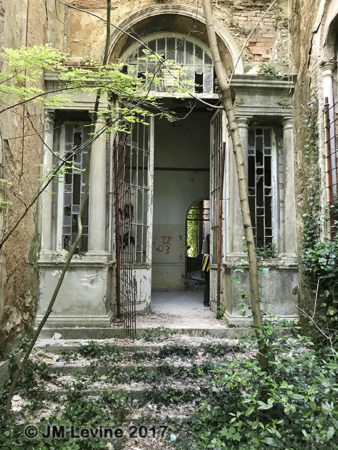
Another entrance to the Charcot building.
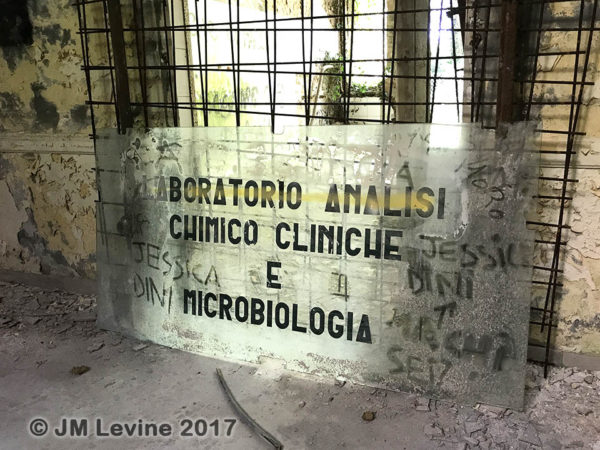
A glass sign for the abandoned chemistry and microbiology laboratory.
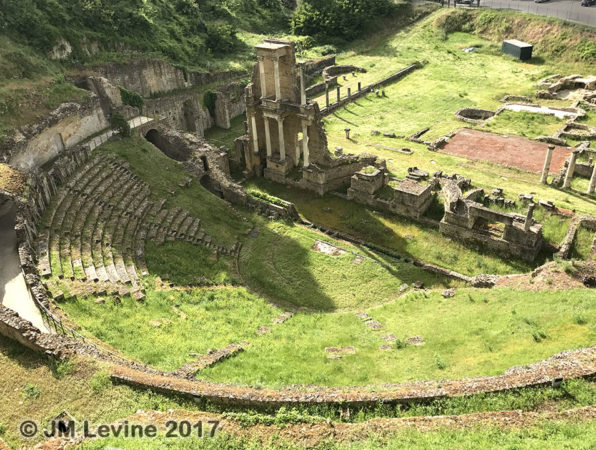
In the 1950s the inmates were put to work as free labor to excavate a massive Roman amphitheater that today is a tourist attraction.
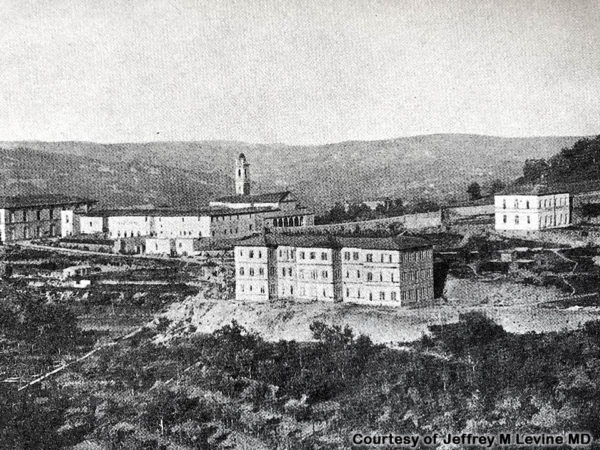
An engraving from the early 20th Century showing the hospital grounds when it was active.
I had the opportunity to read the medical director’s report from 1910. His name was Dr. Luigi Scabia, and when he died in 1934, he chose to be buried in the cemetery on the grounds of the asylum. This report had engravings of the facility when it was open, and photos of some of the medieval-looking treatment devices.
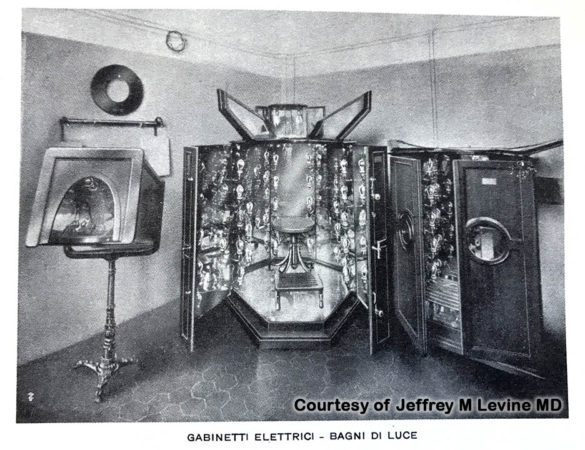
A photo from the medical director’s report of 1910 showing one of the electrical treatment devices.
Visiting this place was both chilling and moving. Chilling because of the spookiness of the place, its ominous arched windows covered with rusting bars and wild foliage. Moving because of the suffering that took place here. It was an unplanned highlight of my Italy trip that reminded me of the vastness of the history of the medical profession that is now forgotten.
Reference for this post was: Scabia, L. Il Frencomio De S Girolomo in Volterra. Volterra: Stailimento Tipografico A Carnieri 1910.
* * * * * * * * * * * * * *
Related posts:
An Abandoned Psychiatric Hospital in Tuscany
Childhood Dreams Under the Pulaski Skyway
Manhattan After the Hurricane
Photographing Letchworth Village
Returning to Cow Canyon Trading Post
More Vanished Signs of New York
The Meatpacking District Before the High Line

Thank you Jeff for your curiousity, engagement and good work! You’ve these 3 important gifts which are the doors to secret worlds!
Thank you for sharing this. Love the pictures.
Thank ypu for sharing this. The photos are hauntingly beautiful.